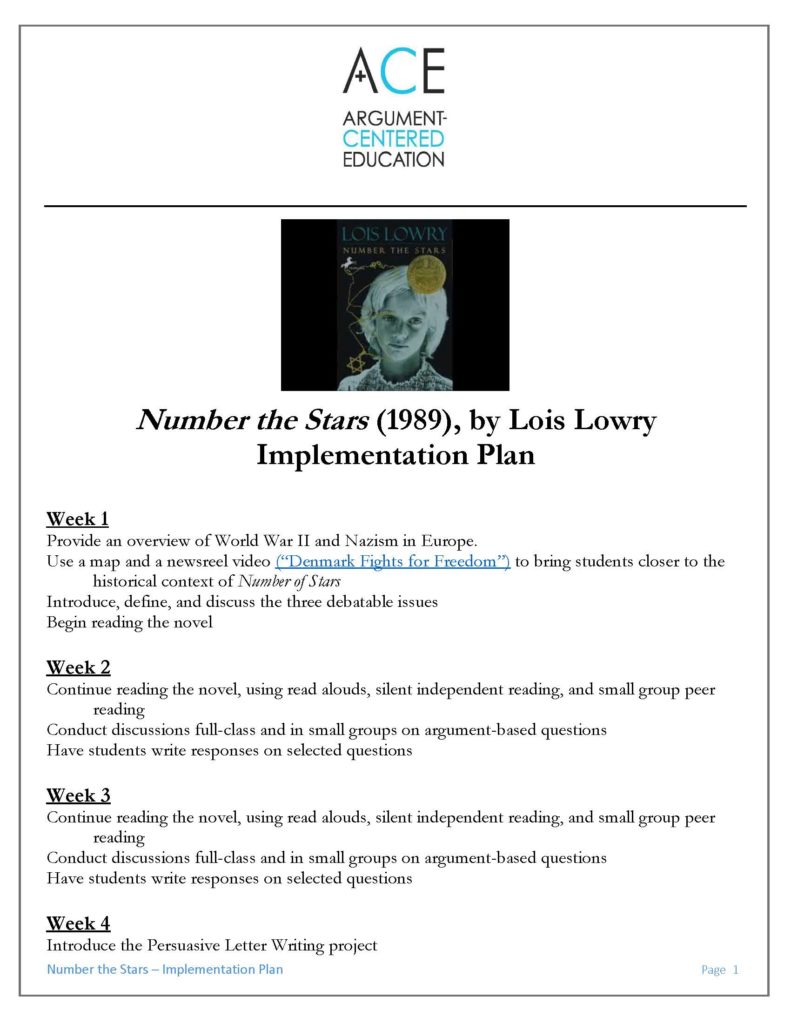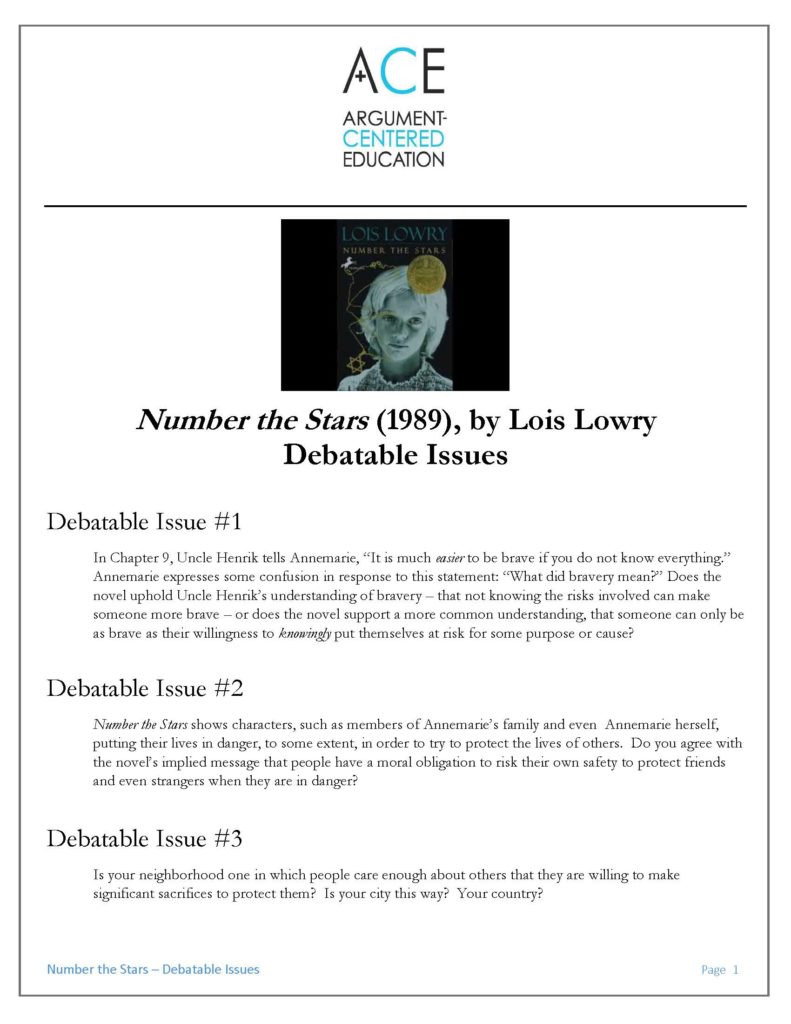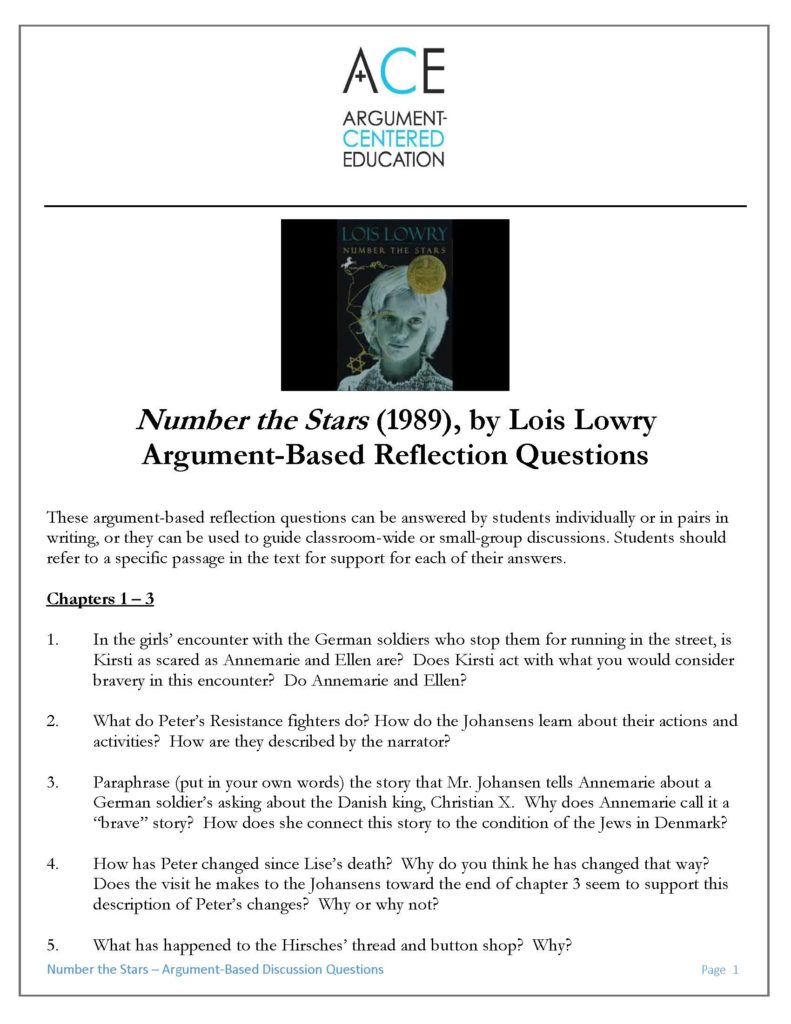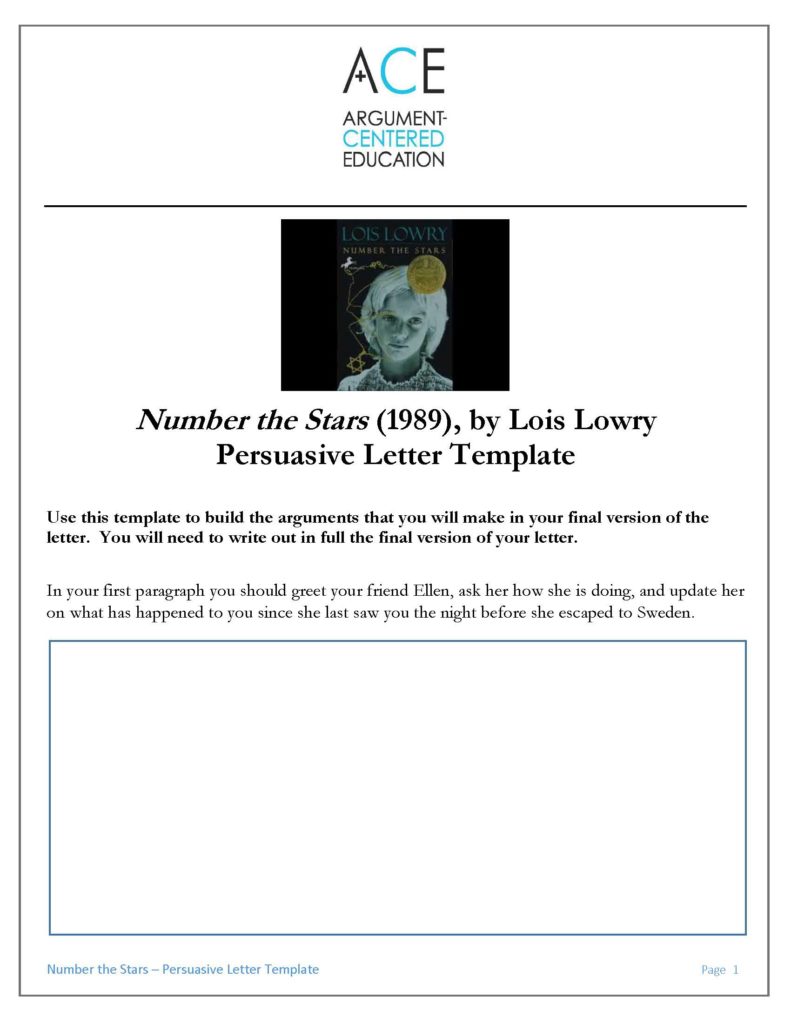
Persuasive Letter Writing and ‘Number the Stars’
This is an argument-based project on Lois Lowry’s 1989 young adult novel on the Nazi occupation of Denmark and its impact on a gentile and Jewish family of friends. It asks students to study the novel in relation to debatable issues related to the central motif of bravery in the book, and then has students write a persuasive letter from the protagonist, Annemarie Johansen, to her Jewish friend in exile, Ellen Rosen, answering a question that gets to the heart of the question that the book asks: does the young Annemarie act courageously, and if so how courageously?
Overview
One of the issues that has guided the class’s reading, study, and interpretation of Number the Stars has been the question of whether the novel is suggesting a broadened understanding of bravery, one that includes something we might call “unknowing courage.”
In this activity, students will take a position on this interpretive question, and express that position, along with interpretive arguments to support it, in the form of a letter from Annemarie Johansen to her exiled friend in Sweden, Ellen Rosen. The letter will express and attempt to defend the conclusion that Annemarie comes to on whether someone can indeed become more brave when they are unaware of the full risks they are taking, or whether true bravery can only be measured on the basis of how much risk someone knowingly faces in order to achieve some purpose or cause.
In this activity, students will take a position on this interpretive question, and express that position, along with interpretive arguments to support it, in the form of a letter from Annemarie Johansen to her exiled friend in Sweden, Ellen Rosen. The letter will express and attempt to defend the conclusion that Annemarie comes to on whether someone can indeed become more brave when they are unaware of the full risks they are taking, or whether true bravery can only be measured on the basis of how much risk someone knowingly faces in order to achieve some purpose or cause.
Method and Procedure
The Method and Procedure below is aligned with this five-week Implementation Plan.
 (1)
(1)
Introduce the debatable issues to your class, and define terms that may be unfamiliar. Try to come up with examples beyond and outside of the novel that can illustrate how either side of each debatable issue might defend their position.

(2)
Read the novel with the class, alternating between in-class read alouds, silent independent reading, and students reading to each other in small groups. Use the argument-based discussion questions at the end of each chapter cluster to lead whole-class discussion, conduct small-group discussions that are then shared out, or to have students write their responses individually or in pairs. The questions will help students activate their thinking about the debatable issues.

(3)
After you have finished reading the novel and discussing the argument-based questions, return the students to the first debatable issue. Tell the students that they will be writing a persuasive letter as though they were Annemarie, to her friend Ellen. Annemarie wants to write to Ellen to ask her if she is coming back to Copenhagen. The letter will also express and attempt to defend the conclusion that Annemarie comes to on whether someone can indeed become more brave when they are unaware of the full risks they are taking, or whether true bravery can only be measured on the basis of how much risk someone knowingly faces in order to achieve some purpose or cause. The letter will, in effect, be Annemarie’s telling her friend how brave she thinks she was in the war.
(4)
You should distribute the Persuasive Letter Template and review the parts of the letter that the template will help them build. Students should draft their own letter, though, after they complete the template. The template is a tool to help them write their final version. Students can optionally draw a picture coming from the narrative, if they’d like, and add that to their final version of the letter.

(5)
Read through and review the Selected Passages with students, demonstrating how one or two of them might be used as support in the letter.

(6)
Give students time in class to complete their Persuasive Letter Template. Collect the templates for formative assessment. Hand back the templates with feedback, either for each student individually, or by identifying patterns of proficiencies and deficiencies in a set of analytics.
(7)
Monitor and support student work in turning their Persuasive Letter Template into a full letter. Collect students’ persuasive letters, for summative assessment, based on a modified Argument-Centered Education assessment rubric for argument writing. Consider posting the students’ letters on a hallway bulletin board on a wall in the classroom.


